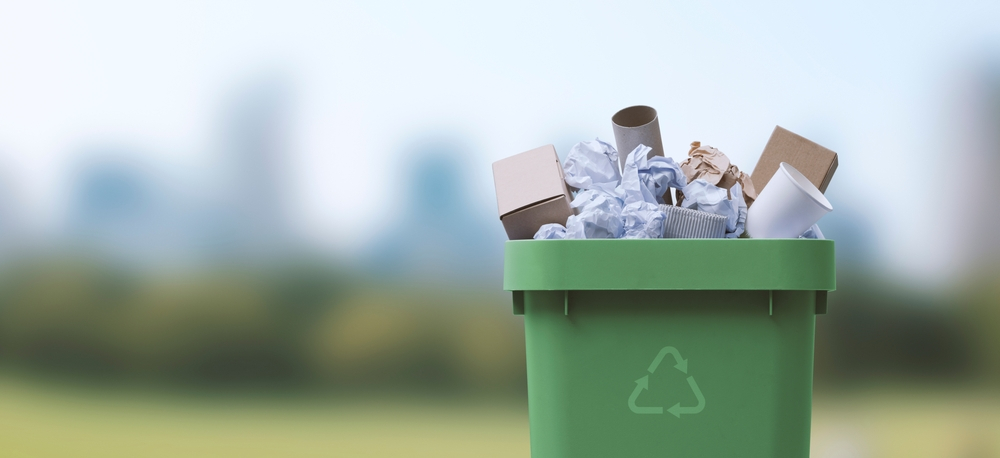

Welcome to the fascinating world of waste paper recycling! Did you know that recycling one ton of paper can save up to 17 trees and 7,000 gallons of water? That's just one of the many benefits of waste paper recycling. By recycling our paper waste, we can reduce our environmental footprint, conserve resources, and save energy.
In this blog post, we will take you through the complete process of waste paper recycling. From collection and sorting to pulping, screening, de-inking, and papermaking, we will cover everything you need to know to understand how waste paper is recycled into new paper products.
But first, let's take a closer look at what waste paper is. Waste paper refers to any paper that has already been used for its original purpose and is now ready to be recycled. This includes everything from old newspapers, magazines, and cardboard boxes to printer paper, envelopes, and paper towels.
Recycling waste paper needs to be collected and sorted before it can be processed into new paper products. Once sorted, the paper goes through a series of processes, including pulping, screening, cleaning, de-inking, and papermaking, to transform it into high-quality recycled paper.
So, join us on this journey through the waste paper recycling process and discover how you can make a difference by recycling your paper waste.

There are different types of waste paper that are recycled in different ways. The most common ones include old corrugated containers (OCC), mixed paper, old newspapers (ONP), and high-grade deinking (HGD) paper.
The type of waste paper that is recycled determines the quality of the recycled paper products that are produced.

Waste paper is collected from various sources and sorted into different grades based on its quality and type. The sorting process involves separating paper from other materials using conveyor belts, air classifiers, or manual labor.
At Ambani Paper, we prioritize efficient and effective waste paper collection and sorting to maximize the quality and value of our recycled paper products.

Before the pulping process begins, the waste paper must be screened and cleaned to remove any contaminants or non-paper materials. This step is essential to ensure that the final recycled paper product meets high-quality standards.
The screening process involves passing the waste paper through a series of screens and filters to remove any large contaminants like plastic, staples, or paper clips. The cleaned waste paper is then sent through a cleaning process that involves removing any remaining contaminants through air separation or washing.
At Ambani Paper, we use state-of-the-art screening and cleaning equipment to ensure that our recycled paper products meet the highest quality standards. Our expert technicians carefully monitor the process to ensure that our paper is free of contaminants and ready for the pulping process.

After the screening and cleaning process, the waste paper is ready for the pulping process. However, before pulping can begin, the paper must be de-inked and bleached to remove any remaining ink or stains.
The de-inking process involves using chemicals to break down the ink particles and separate them from the fibers. This is important because recycled paper often contains ink residue from previous use, which can affect the quality of the final product.
Once the paper has been de-inked, it may also be bleached to further improve its brightness and whiteness. Bleaching can be done using chlorine-based or oxygen-based chemicals, depending on the desired level of brightness.

After the waste paper has been collected and sorted, it is time for the pulping process. This process involves breaking down the waste paper into its constituent fibers so that it can be reused to make new paper products.
The pulping process begins by adding water to the waste paper and mixing it in a large machine called a pulper. This machine breaks the paper down into small pieces and separates it from any non-paper materials, such as staples or plastic. Once the paper has been broken down, chemicals are added to the mixture to help dissolve any remaining non-fibrous materials and to separate the fibers.
There are two main types of pulping processes: chemical pulping and mechanical pulping. Chemical pulping involves the use of chemicals to dissolve the non-fibrous materials and separate the fibers, while mechanical pulping involves physically separating the fibers through processes such as grinding and refining.
At Ambani Paper, we use a combination of both chemical and mechanical pulping processes to ensure that we produce the highest quality recycled paper products. Our state-of-the-art facilities and expert technicians enable us to fine-tune our pulping process to produce the best possible results.
Once the waste paper has been pulped, cleaned, de-inked, and bleached, it is ready to be transformed into new paper products through the papermaking process.
The papermaking process involves pouring the pulp onto a large screen where water is drained through, leaving behind a mat of fibers. This mat is then pressed to remove any excess water and to bond the fibers together, creating a strong and durable sheet of paper.
The paper is then dried using heat or air and may be passed through a series of rollers to create a smoother surface. Finally, the paper is cut into the desired size and shape for use in various applications.
At Ambani Paper, we use state-of-the-art papermaking equipment to produce high-quality recycled paper products. Our expert technicians carefully monitor the process to ensure that our paper meets or exceeds industry standards for quality and consistency.
Recycling waste paper into new paper products is an important step in reducing the environmental impact of paper production. By using recycled paper products, we can help conserve natural resources, reduce greenhouse gas emissions, and reduce the amount of waste sent to landfills.
At Ambani Paper, we are committed to sustainability and environmental responsibility. We are proud to offer a range of recycled paper products that meet the needs of businesses and individuals while contributing to a more sustainable future for all.
Article Last Update: 28 March 2023
